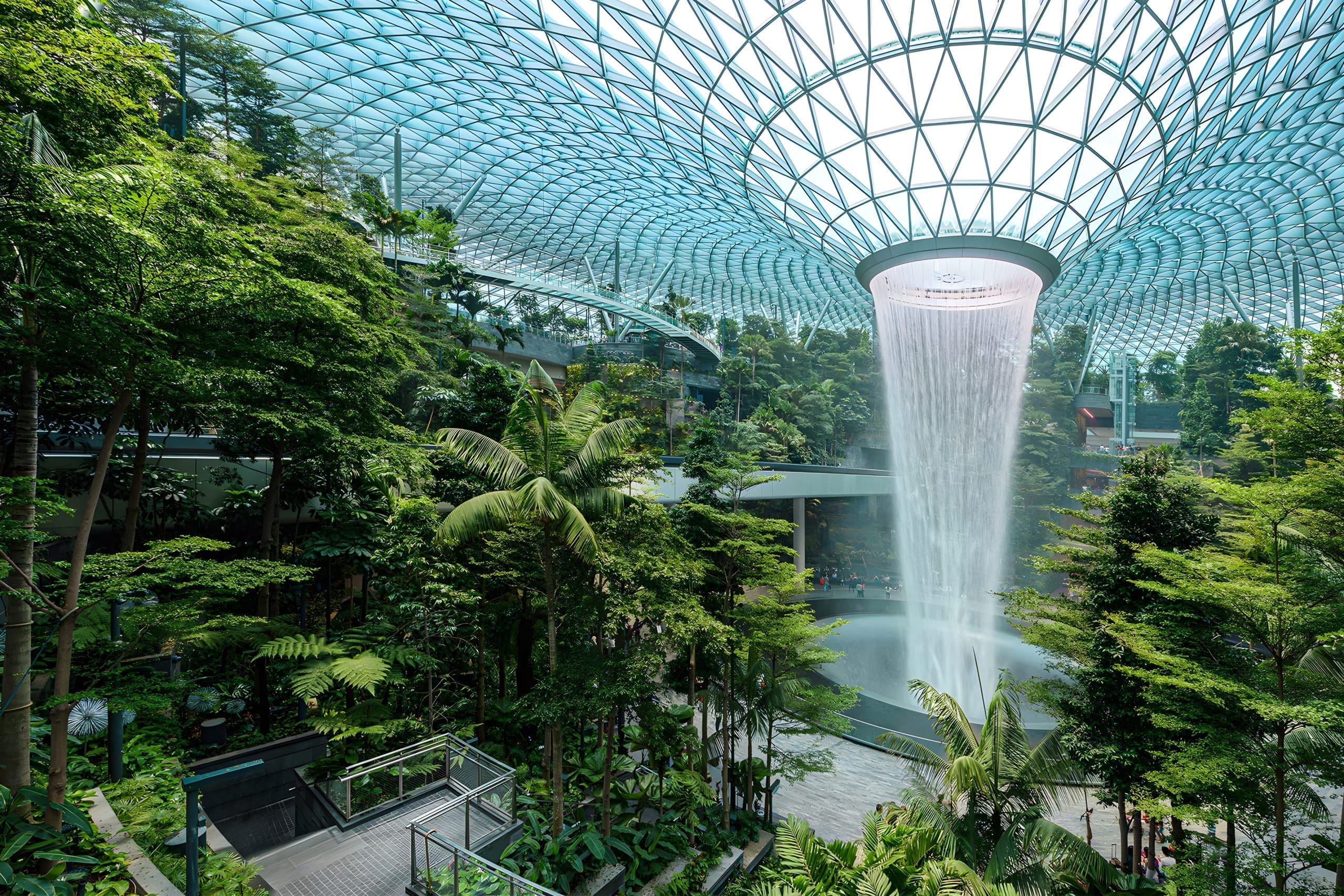What is biophilic design? At its core, biophilic design is an innovative approach that seeks to reconnect individuals with the natural environment through the integration of nature-inspired elements into architectural and interior spaces. This design philosophy emphasises the incorporation of natural light, ventilation, vegetation, natural materials, and landscapes to create harmonious environments that promote well-being and productivity.
The term “biophilia,” introduced by biologist E.O. Wilson, refers to the inherent human affinity for nature. Biophilic design leverages this concept by embedding natural elements into the built environment, thereby fostering a sense of connection to the natural world.
Principles of Biophilic Design
Biophilic design operates on several key principles aimed at creating nature-inspired spaces:
1. Direct connection to nature –
This includes incorporating elements like natural light, water features, green walls, and indoor plants. Large windows, skylights, and strategically placed vegetation help create a soothing, nature-infused ambiance.
2. Indirect connection to nature-
Materials and textures inspired by nature, such as wooden furniture, stone accents, and earthy colour palettes, contribute to a biophilic interior design. Even nature-inspired artwork can have a positive impact.
3. Space & Layout considerations-
Open layouts, dynamic lighting, and airflow optimisation mimic natural environments, making spaces feel more inviting and harmonious.
Benefits of Biophilic Design
- Health & Well-Being –
Studies suggest that exposure to natural elements reduces stress, lowers blood pressure, and improves overall mental health. Offices with biophilic architecture see a significant drop in employee burnout and fatigue. Source
- Increased Productivity & Creativity-
Workspaces incorporating nature-inspired spaces boost creativity and concentration. Research from the University of Exeter found that employees in green office spaces were 15% more productive than those in conventional settings.
- Sustainable & Energy-efficient Design-
Biophilic principles promote energy efficiency by using natural ventilation, daylighting, and sustainable materials, reducing reliance on artificial lighting and air conditioning. Source
Biophilic Architecture in India
In India, biophilic architecture is gaining momentum as architects and designers recognise the cultural significance of nature and its integration into living spaces. Traditional Indian architecture often features courtyards, verandas, and jalis (perforated screens) that facilitates natural light and ventilation. Contemporary designs are reviving these elements to create sustainable and nature-inspired spaces.
For instance, the Maativan farmhouse near Mumbai exemplifies biophilic design by incorporating organic and curved walls, natural materials, and open courtyards, creating a seamless connection between the indoors and outdoors. Source
How Nature Impacts the Human Brain
Neuroscientists have discovered that exposure to natural elements can trigger positive psychological and physiological responses. Effects on the Brain:
- Reduces Cortisol Levels (Stress Hormone):A 2019 study in Frontiers in Psychology found that spending just 20 minutes in a green space significantly reduces cortisol levels, which helps lower stress.
- Enhances Mood and Happiness:Natural environments stimulate the production of serotonin and dopamine, the neurotransmitters responsible for happiness and emotional balance.
- Boosts Attention Restoration:According to Attention Restoration Theory (Kaplan & Kaplan, 1989), natural settings help restore cognitive function and reduce mental fatigue.
By integrating biophilic interior design, architects create environments that support these psychological benefits, resulting in more relaxing and productive spaces.
Challenges and Future Directions
While biophilic design offers numerous benefits, its implementation in Indian architecture faces challenges such as climatic conditions, space constraints, and maintenance. However, ongoing research and technological advancements are paving the way for innovative solutions to these challenges.
The adoption of biophilic design in Indian architecture represents a significant shift towards creating more livable and sustainable cities. By focusing on the connection between humans and nature, this design philosophy offers a promising path forward for urban development in India.
It is a forward-thinking approach that harmoniously blends the built environment with the natural world, creating spaces that are not only aesthetically pleasing but also beneficial to human health and well-being. As urbanisation continues to rise, embracing biophilic design principles will be crucial in developing sustainable and livable cities that honour our intrinsic connection to nature.By integrating biophilic architecture and biophilic interior design, we can create nature-inspired spaces that foster a sense of tranquility and harmony, ultimately enhancing the quality of life for occupants.
In the context of Northeast India and cities like Guwahati, where the natural landscape is rich and diverse, there is immense potential to incorporate biophilic design principles. By doing so, we can create built environments that resonate with the local ecology and cultural heritage, promoting sustainability and well-being in the region.


